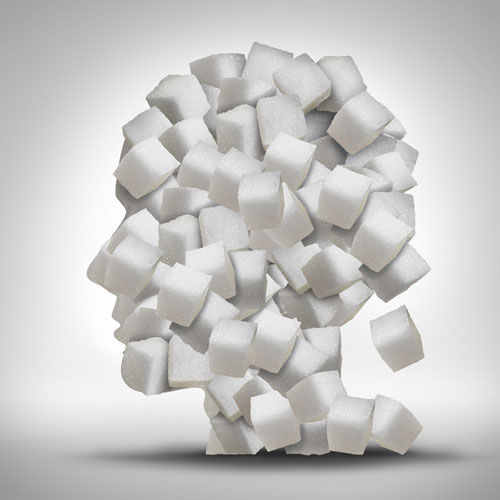Here’s the Scoop on Sugar and the Brain
Constant Glucose Supply is Key:
The brain requires a steady supply of glucose to function optimally. However, when we consume sugar, our blood glucose levels spike and then plummet, which can wreak havoc on our neurological health. This rollercoaster of sugar highs and lows is especially tough on those suffering from depression and/or anxiety.
Sugar and Stress:
Consuming sugar impairs the body’s ability to cope with stress. It can lead to issues with concentration and can cause fatigue—both common symptoms often mistaken for anxiety. Following the sugar rush, the inevitable crash can also lead to physical symptoms like shaking and tension, exacerbating feelings of anxiety. Psychology Today discusses this phenomenon.
The Serotonin Saga:
Initially, sugar boosts serotonin, the brain’s “feel-good” chemical, which is why sweets can temporarily make us feel happier. But here’s the catch: over time, with continuous high intake of sugar, the body reduces its own natural production of serotonin. This disruption leads to increased cravings for sugar as the body seeks to restore balance, trapping us in a vicious cycle.
Long-Term Effects on the Brain:
Consuming too much sugar and refined carbs can literally alter the structure and function of the brain. Excess glucose reacts with proteins in a process known as glycation. This reaction can impair the proteins’ functions, causing cellular structures to thicken and slow down, which impedes brain communication. Patrick Holford’s Optimum Nutrition for the Mind (2011) details how an overload of glucose can cause damage akin to oxidants, disrupting nerve cells and contributing to a sluggish brain.

Common Symptoms Linked to Sugar
Struggling with poor memory?
Feeling irritable, anxious, or depressed?
These could be signs that sugar is impacting your mental clarity and emotional health. Cutting back on sugar might just be the key to clearer thinking and a more stable mood.
By understanding the impact of sugar on our brains and bodies, we can make more informed choices about our diets, leading to healthier and happier lives. So next time you’re tempted to reach for that sweet treat, remember what’s at stake—it’s not just a moment on the lips, but potentially a lasting effect on the brain!

